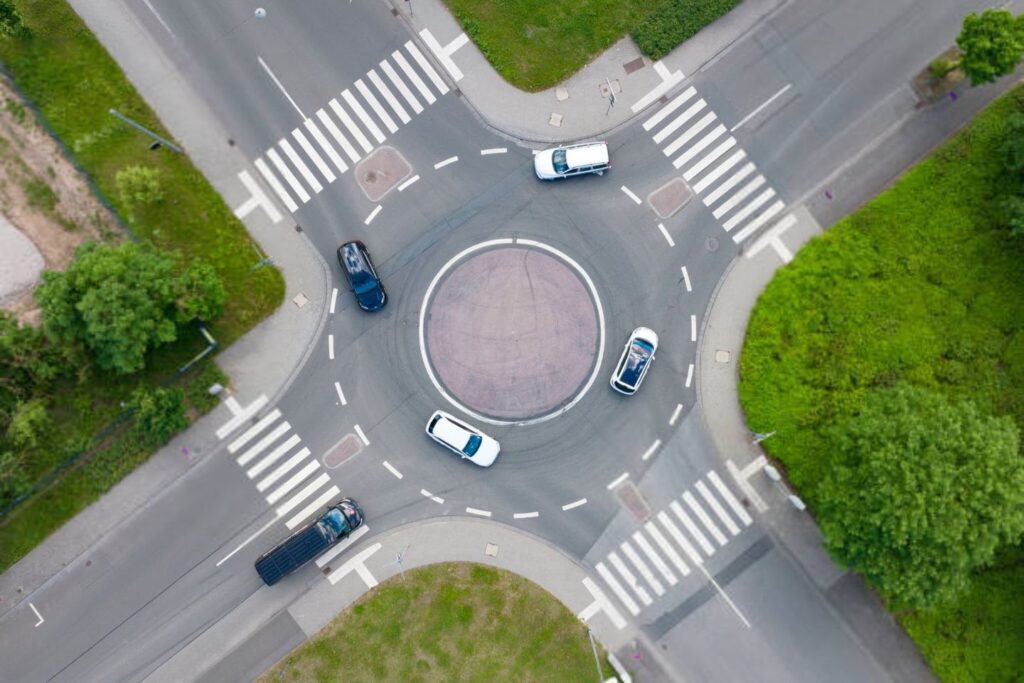California has been ranked second in the United States for both fatal car accidents and car accident deaths, with 3,983 and 4,285 incidents reported in 2021, respectively.
This translates to a concerning rate of 10.9 deaths per 100,000 people. These figures represent a significant and ongoing challenge in road safety, highlighting the importance of understanding and adhering to traffic laws.
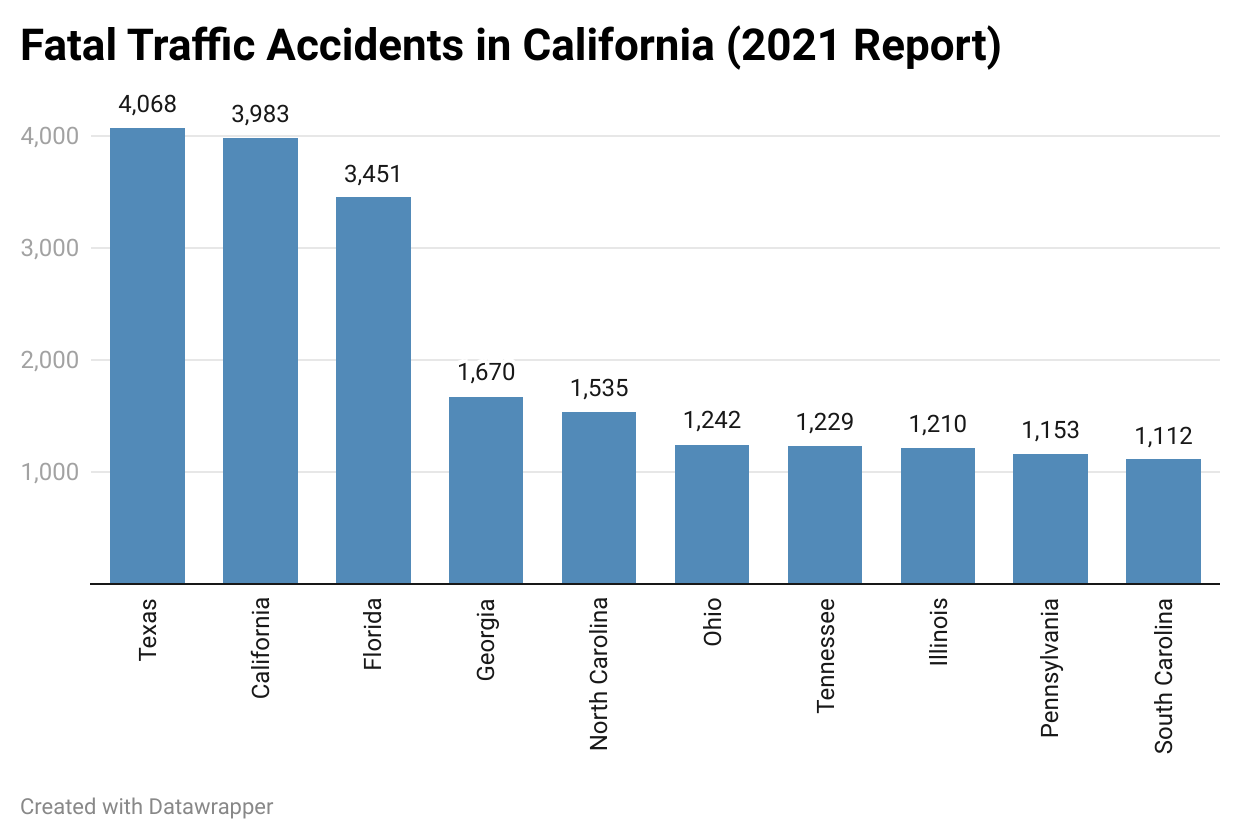

This urgency brings us to the concept of ‘right of way‘ – a fundamental yet often misunderstood element of road safety and legal responsibility. Understanding the right-of-way California laws helps you make informed decisions that can prevent accidents and save lives.
- What Does “Right of Way” Mean in California?
- What Are California’s Right of Way Laws?
- Right of Way California Laws: What Happens If You Fail to Yield
- Who Is Responsible for Right of Way in Case of Accidents in California
- How to Claim Compensation in “Right of Way” Disputes?
- Seeking Legal Consultation for Right of Way California Issues?
What Does “Right of Way” Mean in California?
The term “right of way” in California refers to the rules that determine which vehicle or pedestrian has the legal right to proceed first in a traffic situation. It’s not about having the absolute right to go, but rather about knowing when to yield to avoid accidents. This concept is crucial in ensuring smooth and safe traffic flow, especially at intersections, merging lanes, and crosswalks.
In California, the right of way is governed by specific laws outlined in the California Vehicle Code. These laws are designed to reduce confusion and conflict on the road, making it clear who has the right of way in various situations and thereby reducing the likelihood of accidents.
What Are California’s Right of Way Laws?
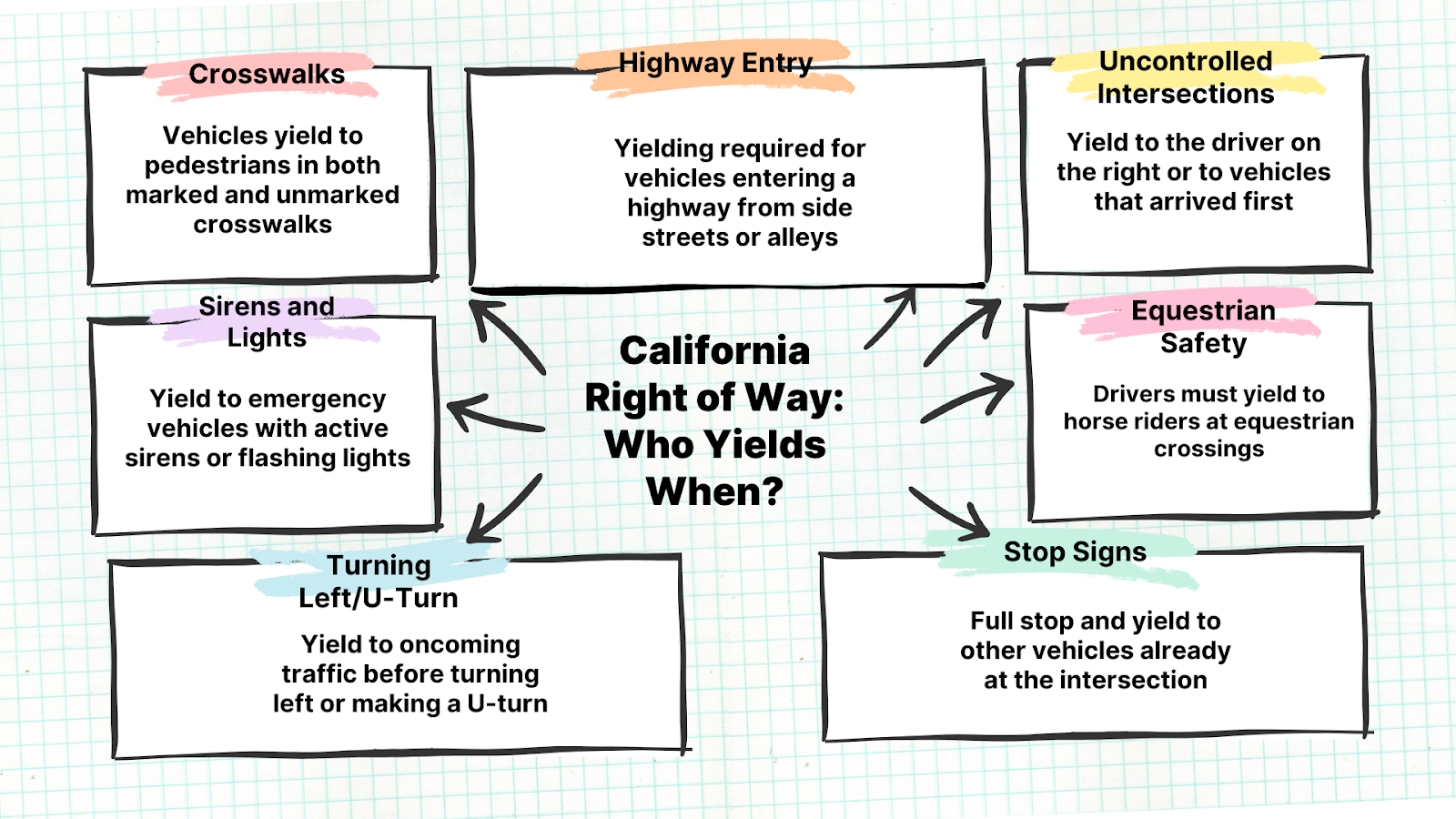

Navigating right-of-way California laws is essential for ensuring safety on the state’s roads.. Here are some of the key sections that govern right-of-way rules in California:
Pedestrian Right of Way at Crosswalks
Under California Vehicle Code § 21950, the duty of drivers is to yield to pedestrians crossing roadways. This applies to both marked and unmarked crosswalks at intersections, emphasizing the need for driver attentiveness to ensure pedestrian safety. By legally requiring vehicles to give way, this code plays a vital role in protecting those on foot, one of the most vulnerable groups on the road.
Yielding to Emergency Vehicles
Sections 21806 of the California Vehicle Code addresses the interaction between drivers and emergency vehicles. Drivers are required to yield to emergency vehicles, such as ambulances and police cars when they are using their sirens or flashing lights. The law states that drivers must pull over safely and allow these vehicles to pass. Additionally, Section 21807 reminds drivers of emergency vehicles to remain cautious and considerate, balancing urgency with safety.
Entering Highways from Non-Roadways
California Vehicle Code § 21804 is designed to manage traffic flow and enhance safety when vehicles gather onto busier roads. This law specifically addresses vehicles entering highways from side streets, parking lots, or alleyways. According to subsection (a) of this code, these vehicles must yield to traffic that is already traveling on the highway. This ensures that cars on the main road can continue their journey uninterrupted. Section (b) clarifies that vehicles must also yield to those that have already commenced their entry onto the road.
Stopping at Stop Signs
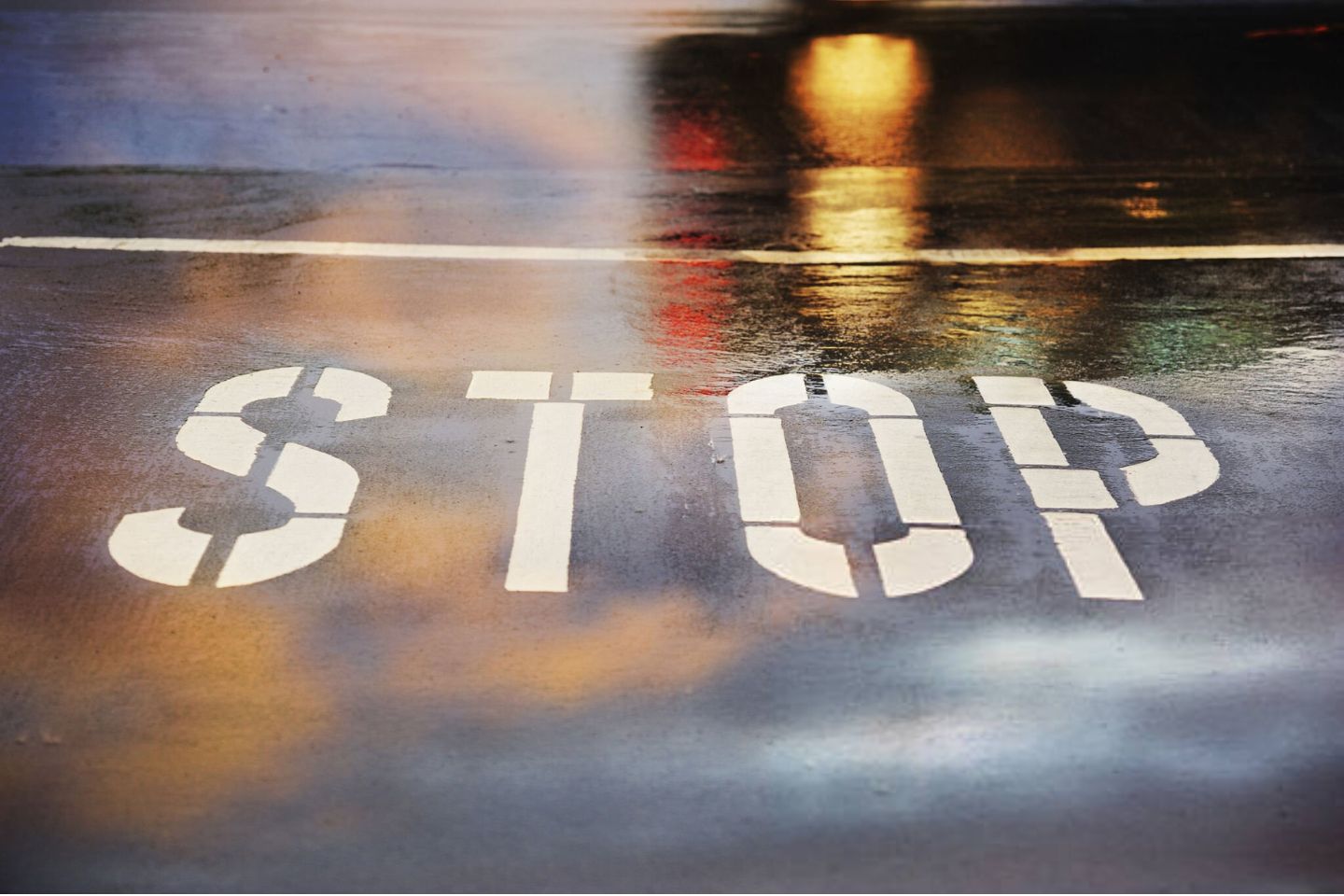

Per California Vehicle Code § 21802, drivers approaching stop signs are required to come to a full stop and yield to all vehicles at the intersection. This aids in regulating traffic at intersections controlled by stop signs, ensuring each driver takes their turn safely and efficiently.
Left Turns and U-Turns
California Vehicle Code § 21801 outlines specific rules for drivers intending to turn left or make a U-turn. They must yield to all oncoming traffic and only initiate their turn when it is safe. Furthermore, if a driver has already begun a left or U-turn after yielding appropriately, oncoming traffic must then yield to them, facilitating smoother and safer turns.
Uncontrolled Intersection Protocol
The California Vehicle Code § 21800 is essential for navigating uncontrolled intersections, which lack traffic lights, stop signs, or yield signs. This law outlines specific right of way rules for these scenarios. For instance, when two vehicles arrive at an intersection simultaneously from different directions, the driver on the left should yield to the driver on the right. Understanding and following these rules is crucial for safe and lawful driving, particularly in situations where standard traffic controls are not present to guide drivers.
Equestrian Crossing Yield Rules
California Vehicle Code § 21805 specifically caters to the safety of equestrians—horse riders and their mounts. It states that drivers yield the right of way to horses and their riders at designated equestrian crossings. This aspect of California traffic law acknowledges the diverse types of road users, including those on horseback, and underscores the importance of their safety in shared road spaces.
Right of Way California Laws: What Happens If You Fail to Yield
Failing to yield the right of way California rules can have serious repercussions, primarily in the form of traffic violations, fines, and the potential for varied types of accidents and resulting injuries.
Here’s a closer look at what drivers might face:
- Traffic Violations and Fines: Failing to adhere to yield laws in California is a serious matter, often resulting in a traffic ticket with significant financial implications. The California Vehicle Code (CVC) specifies penalties for such violations, with fines ranging approximately from $220 to $450.
The exact amount depends on whether it’s your first offense or a subsequent one, and also varies based on the county where the ticket is issued. Moreover, each violation adds points to your driving record, which can lead to higher insurance premiums and, in severe cases, the possibility of license suspension. - Accidents and Possible Injuries: Beyond financial penalties, failing to yield can result in various types of accidents, each with its own set of potential injuries.
Common accidents include side-impact collisions at intersections, rear-end accidents due to sudden stops, and pedestrian incidents. These accidents can lead to a range of injuries from whiplash and broken bones to more severe consequences like traumatic brain injuries and spinal cord damage.
In such challenging times, the physical, emotional, and financial impacts of a traffic incident can be overwhelming. This is where The Personal Injury Center steps in to provide crucial support. We specialize in connecting you with expert personal injury lawyers who can guide you through these complexities, helping to alleviate your stress and safeguard your interests.
Who Is Responsible for Right of Way in Case of Accidents in California
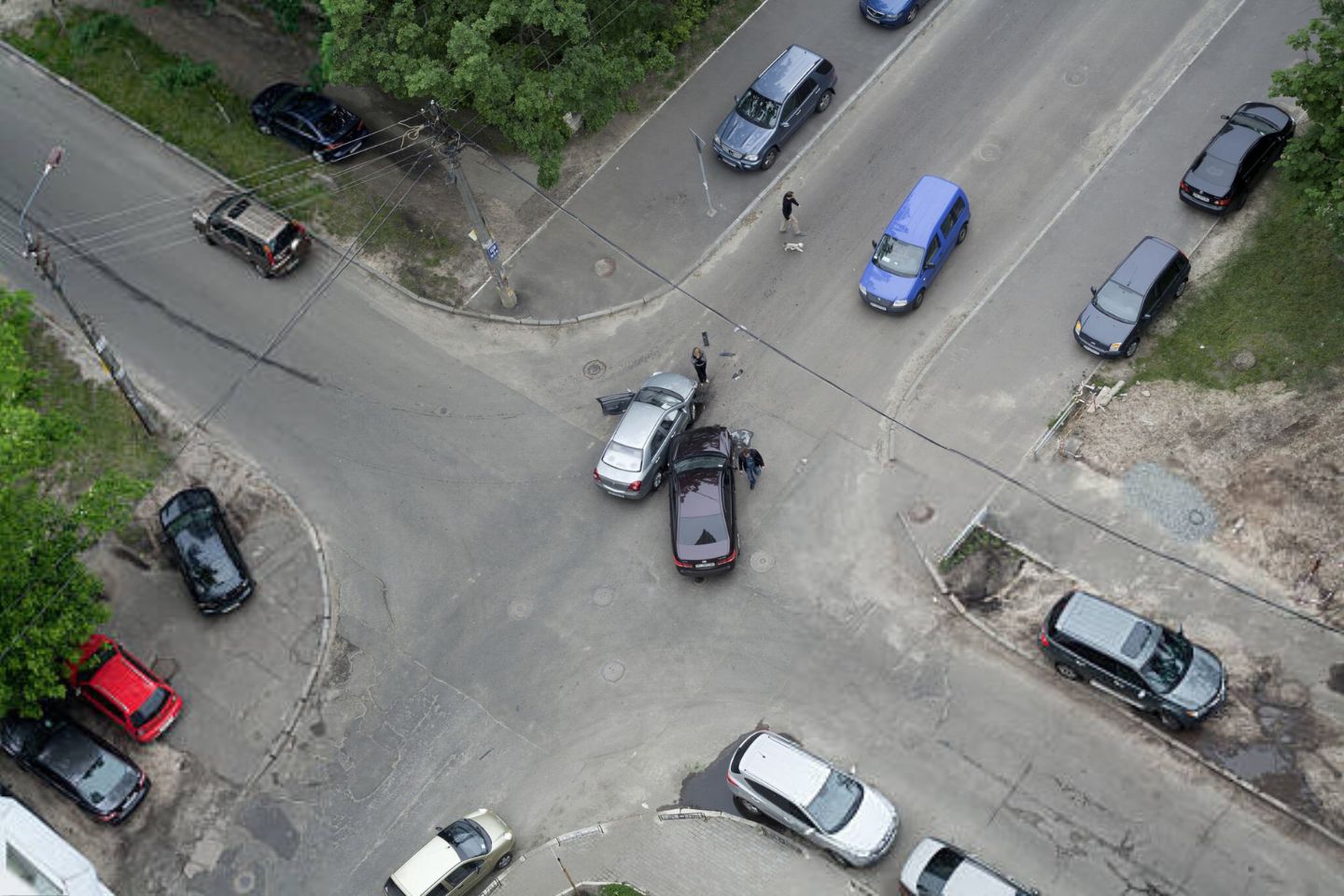

Determining responsibility results from a clear understanding of the state’s right-of-way laws, as outlined in the California Vehicle Code.
When accidents occur, the key question often revolves around who had the right of way and whether that right was respected.
For instance, if a driver fails to yield to a pedestrian at a crosswalk, as required by Section 21950, the driver is typically considered at fault. Similarly, if a driver disregards a stop sign and causes a collision, they would likely be held responsible due to their failure to comply with Section 21802.
However, determining fault is not always straightforward. In some cases, both parties may share responsibility.
For example, if a pedestrian crosses the road recklessly outside of a crosswalk, and a driver who had the chance to stop safely fails to do so, both may be partially at fault. In such scenarios, California’s comparative negligence system may apply, where each party’s degree of fault is considered in resolving claims and awarding damages.
How to Claim Compensation in “Right of Way” Disputes?
Engaging in a traffic dispute over “right of way” violations in California can be challenging. If you’re seeking compensation for damages or injuries, understanding the legal process is essential.
Here’s what you need to do:
Gathering Evidence
After an accident, it’s vital to collect as much evidence as possible. Photographs of the scene, vehicle positions, injuries, and road conditions are crucial. Additionally, gather witness contact details and secure the police report. Under California Vehicle Code § 16000, involved drivers must report the accident to the DMV, which proves to be an essential document in your compensation claim.
Seeking Medical Attention
Prioritize your health by seeking immediate medical attention for any injuries. These medical records are not just critical for your health; they’re also key in claiming damages under California’s personal injury laws. They provide a detailed account of injuries and treatments, crucial for your compensation claim.
Leveraging Expertise in Right of Way Laws
The complexity of right-of-way laws and personal injury claims in California requires professional guidance. The Personal Injury Center connects you with expert personal injury lawyers well-versed in California traffic laws, ensuring you receive knowledgeable advice specific to your case.
Initiating the Compensation Process
With your lawyer’s assistance, you’ll file a compensation claim. This might include damages for medical expenses, lost wages, property damage, and pain and suffering, in line with California law. The specifics will depend on the incident details and injury severity, guided by relevant California Vehicle Code sections.
Reaching a Settlement


Most personal injury claims are settled outside court. Your attorney will negotiate with the other party’s insurer to secure a settlement that covers your damages. This negotiation relies on understanding California’s negligence laws, especially in right-of-way disputes.
Your lawyer will strive to describe how the other party’s failure to yield or adhere to right-of-way rules contributed to the incident. The aim is to secure a settlement that comprehensively addresses your damages, including medical expenses, lost income, and pain and suffering.
Taking the Case to Court
If settlement negotiations do not yield a satisfactory outcome, your attorney is prepared to escalate the matter to court. This step involves a more formal presentation of your case before a judge or jury. The focus will be on clearly establishing the liability of the other party, supported by evidence and legal principles.
The objective in court is not just to highlight the other party’s negligence but to also quantify the extent of your damages, aiming for a verdict that grants you the compensation you are entitled to under the law.
Seeking Legal Consultation for Right of Way California Issues?
If you’re struggling with the complexities of a right-of-way situation in California, The Personal Injury Center is here to offer you expert legal assistance. We focus on empowering you with knowledge about your rights and the compensation you might be entitled to.
Contact us, and we will connect you with an expert lawyer in your area who specializes in right-of-way cases. Trust us to guide you through these complex legal waters, ensuring a smoother path to justice and recovery.
Key Takeaways
|



